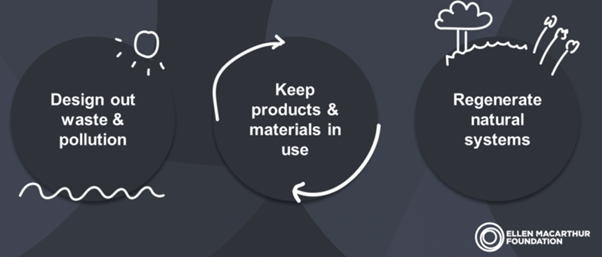From lines to circles – embracing the circular economy
The food recovery hierarchy relates closely to the circular economy (or ‘circular society’), which calls for a shift away from a linear take-make-use-waste approach to resource use. The circular economy describes an approach to resource use where waste and pollution are designed out, products and materials are kept in use as long as possible, and nutrients and energy are captured at the end of a product’s life to regenerate natural systems.
Embracing the circular economy is crucial for achieving sustainable food systems because many of the resources that are used to produce food are scarce or non-renewable, and virgin extraction or production can be environmentally and socially harmful – so we can’t afford to be wasteful.

Circular economies can exist on a variety of scales, from local, place-based circles to regional, national, or even global ones. When we apply circular economy concepts at the local level, there’s often a spinoff benefit of community building, reduced transport emissions, and community resilience.
The circular economy isn’t a new concept. In Aotearoa, it has deep roots in a te ao Māori worldview, which links people and the environment through whakapapa relationships, making holistic, intergenerational kaitiakitanga of te taiao a no-brainer. Para Kore, a Māori not-for-profit organisation, provides an example of this worldview in action as they work towards the goal of zero waste by developing systemic solutions, advancing mana motuhake, and strengthening whakapapa connections to Papatūānuku and Ranginui.
Date released: 29 March 2023
Last updated: 29 March 2023